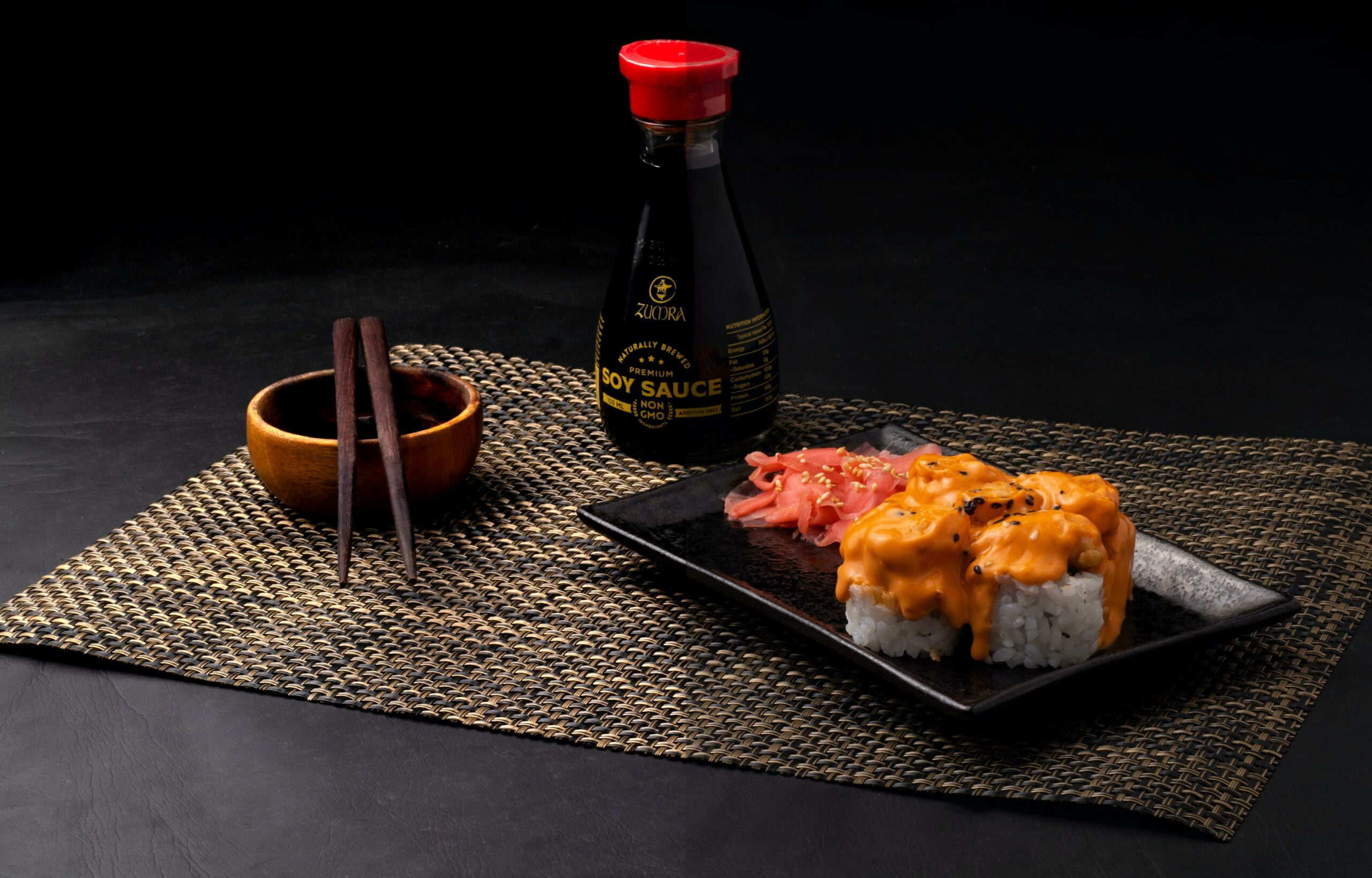Prepare to embark on a tantalizing journey through the enchanting world of sushi in Japan, where tradition meets innovation, and every bite transports you to a realm of exquisite flavors. In this captivating article, we will uncover the intriguing facets of sushi, delving deep into its historical roots, artistic presentation, and technical mastery. Get ready to indulge your senses as we unveil Japan’s culinary marvels, offering a rich tapestry of knowledge and insights that will leave you craving for more. Join me as we unravel the secrets of this captivating gastronomic tradition, exploring the very essence of sushi in all its splendor.
Intriguing Facets of Sushi in Japan
Sushi, a captivating culinary marvel from Japan, unveils a world of intriguing facets that enthrall both locals and international food enthusiasts alike. In this article, we embark on a journey through the enchanting traditions of sushi, exploring its diverse ingredients, artistic presentation, and historical roots. Join me as we delve into the mesmerizing world of sushi, where innovation meets tradition, and each bite is a symphony of flavors.
A Canvas for Creativity: Breaking the Rules
One of the most intriguing facets of sushi in Japan is the freedom and creativity it offers to the sushi chefs. Unlike many other cuisines, sushi does not have strict rules, allowing the imagination of the chef to soar. While traditional sushi consists of vinegared rice topped with raw or cooked fish, modern interpretations have pushed the boundaries with unconventional ingredients and unique flavor combinations. From fusion rolls bursting with vibrant colors to delicate morsels topped with exotic garnishes, sushi becomes a canvas for the chef’s creativity to shine.
“Sushi in Japan breaks the mold of traditional culinary norms, captivating both the eyes and taste buds with its innovative and artistic approach.”
Sushi Beyond Borders: A Global Obsession
While sushi is undoubtedly synonymous with Japan, its popularity has transcended borders, captivating the hearts and palates of food enthusiasts worldwide. From bustling metropolises to small coastal towns, sushi restaurants have sprouted in various corners of the globe, each offering their unique twist on this iconic dish. This global obsession with sushi serves as a testament to its universal appeal, bridging cultures and bringing people together through the love of gastronomy.
“The allure of sushi knows no boundaries, captivating the world with its harmonious blend of flavors, textures, and cultural heritage.”
The Artistry of Ingredients: Celebrating Versatility
Sushi’s versatility extends beyond its cultural reach, diving deep into the realm of ingredients. Traditionally, sushi showcases an array of fresh fish and seafood, but it also embraces diverse components to cater to every palate. From succulent slices of wagyu beef to vibrant vegetarian rolls bursting with crisp vegetables, the artistry of sushi lies in its ability to craft a harmonious symphony of flavors from a wide spectrum of ingredients. Each sushi bite is a carefully curated masterpiece, reflecting the chef’s meticulous attention to detail.
“Through the seamless fusion of flavors, sushi becomes an edible artwork, encapsulating the beauty and versatility of nature’s bounty.”
Sushi’s Indulgent Aura: The Epitome of Fine Dining
When it comes to indulgence, sushi reigns supreme as a high-quality gastronomic experience. Its meticulous preparation, exquisite presentation, and exceptional taste make it a sought-after delicacy across the globe. Whether savoring a luxurious dining experience at a prestigious sushiya or enjoying a casual meal at a neighborhood sushi bar, the allure of sushi lies in its ability to transport diners to a realm of unparalleled sensory pleasure. Each bite is an expression of the chef’s dedication to perfection, making sushi an irresistible indulgence.
“Sushi embodies the epitome of fine dining, where every bite is a decadent symphony of flavors and textures, leaving a lasting impression on the discerning palate.”
Tokyo’s Reign: The Heart of Sushi Culture
Traditional sushi has always been intricately woven into the fabric of Tokyo’s culinary landscape. As the epicenter of sushi culture, Tokyo offers a plethora of sushi establishments, ranging from high-end Michelin-starred restaurants to humble sushiya tucked away in narrow alleyways. The city’s rich history and deep-rooted traditions have shaped the sushi scene, ensuring that Tokyo remains at the forefront of innovation and excellence in sushi craftsmanship.
“Tokyo, the culinary capital of Japan, pulsates with a vibrant sushi culture, capturing the essence of tradition, attention to detail, and the pursuit of perfection.”
Nigiri Sushi: A Stroke of Genius by Hanaya Yohei
The intriguing facets of sushi in Japan are intricately tied to the historical figures that shaped its evolution. One such luminary is Hanaya Yohei, often credited with inventing nigiri sushi in the early nineteenth century. This ingenious creation involved placing a slice of fresh fish atop a small mound of vinegared rice, establishing the foundation for the nigirizushi that we relish today. Yohei’s innovation revolutionized the sushi world, elevating it to unprecedented heights of culinary artistry.
“Hanaya Yohei’s pioneering spirit forever changed the course of sushi history, introducing the world to the exquisite simplicity and elegance of nigiri sushi.”
Beyond the Trash: The Remarkable Journey of Sushi Rice
Despite its central role in sushi, the rice once held a humble position. In the past, sushi rice was considered a byproduct of sake production and often discarded as waste. However, chefs soon realized the potential of this discarded grain and transformed it into the foundation of sushi as we know it today. With its perfectly balanced texture and subtle sweetness, sushi rice acts as the vessel for the delicate flavors of sushi, harmonizing with the freshness of the toppings to create a perfect symphony for the taste buds.
“From the discarded remnants of sake production, sushi rice rose from obscurity to claim its rightful place as the heartbeat of every exquisite sushi piece.”
Sashimi’s Rise: A Preference in Japan
While sushi garners international acclaim, sashimi takes the spotlight as the preferred choice among the Japanese themselves. Sashimi, thinly sliced raw fish or seafood, showcases the purity and freshness of the ingredients in their unadulterated form. It allows the delicate nuances of the seafood to shine, providing an unparalleled sensory experience. The Japanese discerning palate often favors sashimi for its pristine flavors, while sushi offers a delightful balance of tastes with the interaction between the fish and rice.
“In the sushi-loving nation of Japan, sashimi reigns supreme, allowing the delicate flavors of pristine seafood to take center stage.”
Sushi: A Delightful Rarity
Contrary to popular belief, sushi is not consumed on a daily basis in Japan. Instead, it is often reserved as a treat or for special occasions. The intricate preparation, attention to detail, and meticulous sourcing of ingredients elevate sushi to a level of exclusivity. This sense of rarity enhances the dining experience, adding an element of anticipation and elevating sushi to a culinary art form that warrants celebration.
“Sushi’s infrequent indulgence lends an air of excitement, making each bite a cherished moment, enlivening taste buds with its extraordinary flavors.”
Sushi’s Diverse Landscape: A Tapestry of Price Points
Sushi in Japan offers a broad spectrum of dining experiences, catering to various budgets and tastes. From unassuming sushi bars tucked away in busy markets to opulent Michelin-starred establishments, there is a sushi experience for every occasion. The charm lies not only in the high-end dining establishments but also in the humble neighborhood sushi joints, where skilled chefs create magic within limited spaces. Sushi aficionados can embark on a gastronomic adventure, exploring the myriad of flavors and price points that define Japan’s vast sushi landscape.
“Japan’s sushi scene paints a vivid tapestry of culinary experiences, ranging from the extravagant to the modest, making the exploration of this diverse landscape an absolute delight.”
As you embark on your own culinary exploration of sushi in Japan, may you be captivated by the intriguing facets that this culinary marvel has to offer. From the creativity of the sushi chefs to the artistry of ingredients, and the historical roots that shaped its evolution, sushi invites you to savor each bite, immersing yourself in the rich tapestry of Japan’s vibrant sushi culture.
Sushi has always been an intriguing part of Japanese culture, and if you’re curious about the fascinating facts surrounding this beloved cuisine, look no further! Dive into the world of sushi in Japan by discovering some captivating facts about its origins, unique ingredients, and traditional preparation methods. Click here to explore the intriguing world of sushi in Japan: facts about sushi in Japan. Prepare to be amazed by the rich history and artistry that goes into creating this culinary masterpiece! So, go ahead and satisfy your curiosity by delving into the captivating world of sushi in Japan. You won’t be disappointed!
FAQ
Question 1
What are the key characteristics of traditional sushi in Japan?
Answer 1
Traditional sushi in Japan embodies a sense of tradition, flavors, and a relentless pursuit of perfection. It is a high-quality dish that can be made with various ingredients, allowing chefs to get creative. Sushi is often seen as an indulgence and is enjoyed not only in Japan but also in other countries.
Question 2
Who is credited with inventing nigiri sushi?
Answer 2
Hanaya Yohei is credited with inventing nigiri sushi, which has become a prominent and beloved style of sushi in Japan and around the world.
Question 3
What is the historical background of sushi in Japan?
Answer 3
Sushi originated in Southeast Asia and made its way to Japan. It became popular in Japan, particularly in Tokyo, due to its association with traditional sushi. Sushi gained further prominence and popularity after an earthquake in the 20th century led to the development of new techniques for preserving fish.
Question 4
What are the different types of sushi?
Answer 4
There are six types of sushi, each with its own unique characteristics and preparation methods. These include nigirizushi (hand-pressed sushi), makizushi (rolled sushi), sashimi (raw fish slices), temaki (hand-rolled sushi), chirashi (scattered sushi), and inarizushi (sushi rice stuffed in seasoned tofu pouches).
Question 5
What is the significance of sushi in Japanese culture?
Answer 5
Sushi holds a significant place in Japanese culture, symbolizing both tradition and innovation. It is often enjoyed as a special treat and can be found in a variety of price ranges and restaurants across Japan. Sushi enthusiasts appreciate the unusual textures, subtle flavors, and the importance of presentation in sushi dining experiences.
- Unlock Water’s Symbolism: A Cross-Cultural Exploration - April 20, 2025
- Identify Black and White Snakes: Venomous or Harmless? - April 20, 2025
- Unlocking Potential: Origins High School’s NYC Story - April 20, 2025















